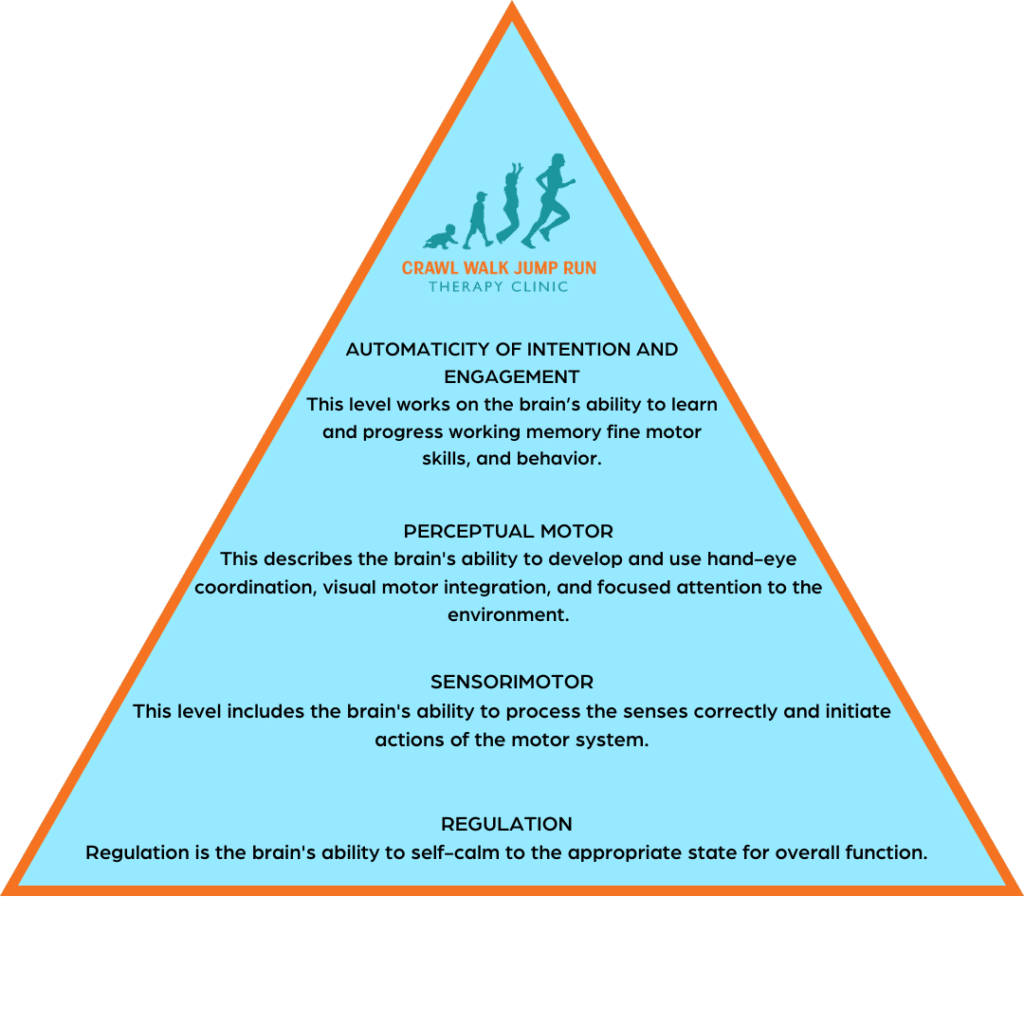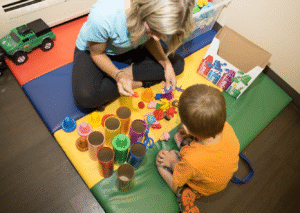Reflex integration and sensory processing go hand in hand. They play a key role in the maturation and development of the neurological system. Each step of neurodevelopment has a lower foundation that needs to be stable and integrated for the higher levels of the brain to function properly.
Pyramid of Neurodevelopment:

Learning occurs in layers, with each part of the brain building on the others as new connections form through sensory experiences, motor planning, and cognitive development. The brain’s four working levels coordinate to support physical, emotional, and cognitive growth.
The Brain Hierarchy
Cerebral Cortex (Cerebellum)
Cerebellum
Limbic System
Brain Stem
Reflex Integration Techniques
Reflex integration techniques can develop the physiological foundation, regulation stage, sensorimotor stage, perceptual motor stage, and the stage of automaticity for intention and engagement. Reflexes are the automatic and repetitive movements that begin in utero and are essential for the development of the brain. They assist in developing appropriate vision, hearing, mobility, balance, speaking and communication, abstract thinking, and creativity.
Reflex integration serves as one of the main building blocks for development. Reflex integration uses a sequence of exercises designed to re-educate your primal, instinctive reflexes that already exist within your body. The therapist strengthens skills and reflexes using reflex integration techniques, addressing those lost or underdeveloped due to sensory sensitivities, injuries, stress, aging, and more.
General diagnoses that can benefit from reflex integration during their therapy session are children and adults with cerebral palsy, dysgraphia, dyslexia, oppositional defiant disorder, post-traumatic stress disorder, autism, learning disability, ADHD/hyperactive or combined type, fetal alcohol syndrome, and other neurological disorders that affect physical, emotional and cognitive development.
An unintegrated reflex is one that does not serve the body and its systems well and depending on the magnitude of impairment can either mature and integrate, fail to mature and remain dysfunctional, emerge pathologically or fail to emerge. Some but not all of the causes of a reflex becoming reactivated (unintegrated) include:

- Environmental toxins
- Congenital disorders
- Disease
- Birth physical or emotional trauma
- Prolonged or intermittent chronic stress
- Injury such as traumatic brain injury or stroke
An unintegrated or “active” reflex causes the body to move in ways the child or adult does not intend. For example, stress can cause the Moro reflex to become active again and cause anxiety, timidity, fears, and phobias to name a few. Once reflexes integrate, the conscious mind takes control, making body movements easier to manage and regulating the sensory system.
Crawl Walk Jump Run Therapy Clinic’s treatments can assist in building a stable neurological foundation for physical, emotional, and cognitive development with reflex integration techniques. Our licensed physical, occupational and speech therapists offer diverse training and treatments, including reflex integration if your child or family member is experiencing a sensory processing disorder or if they are having difficulty with sensory integration. We will thoroughly assess your child or family member to identify the lowest level of their neurological system that needs development and connection. Additionally, we can assist you in understanding and identifying why your child struggles in certain areas, and how we can work together to improve them.
Please contact us at (586) 323-2957 to get started!




